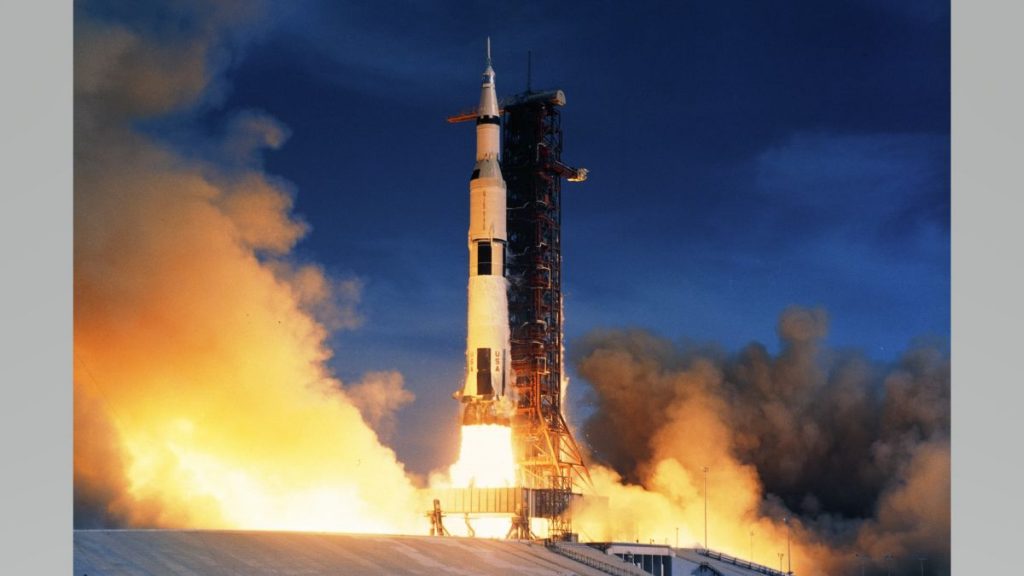There are more than a few popular myths that have permeated the annals of space history, including one that the launch of th Saturn V rocket was so loud that the sound itself melted concrete and set fire to grass more than a mile away. Sadly, as many myths go, that’s simply not true.
Researchers at Brigham Young University (BYU) in Utah have created a physics-based model of a Saturn V rocket launch to estimate its acoustic levels, determining that it had a value of 203 decibels. That nearly matches NASA’s own recording of 204 decibels, based on a test of the Saturn V’s first stage run at NASA’s Stennis Space Center in Mississippi.
For context, sounds above 200 decibels are extremely loud — an ambulance siren hits 120 decibels, while jet engines average about 140 decibels at takeoff, according to the National Institute of Occupational Safety and Health. “Decibels are logarithmic, so every 10 decibels is an order of magnitude increase,” BYU professor Kent L. Gee, lead author of a paper on the team’s research, said in a statement. “One hundred and seventy decibels would be equivalent to 10 aircraft engines. Two hundred would be 10,000 engines!”
Related: NASA’s mighty Saturn V moon rocket: 10 surprising facts
While 200-plus decibels is certainly loud enough to rupture an eardrum (Saturn V launch viewers were kept 3.5 miles (4 kilometers) away from the pad for safety), it’s not loud enough to melt concrete or start grass fires more than a mile away. The team suspects that those effects, if they happened at all, would have been caused by radiative heat from the plume or debris, not sound.
“The Saturn V has taken on this sort of legendary, apocryphal status,” Gee said. “It was an opportunity to correct misinformation about this vehicle,” he noted of the research.
While the new Space Launch System (SLS) rocket will be larger and louder than the Saturn V, NASA has since implemented a sound suppression system into its launch pads. For SLS, 450,000 gallons (2 million liters) of water will rush onto the pad during launch, reducing the rocket’s acoustical levels. The system will not only protect viewers’ ears, but also the rocket’s payloads.
The team’s research was published Tuesday (Aug. 23) in the Journal of the Acoustical Society of America.
Follow Stefanie Waldek on Twitter @StefanieWaldek. Follow us on Twitter @Spacedotcom and on Facebook.

